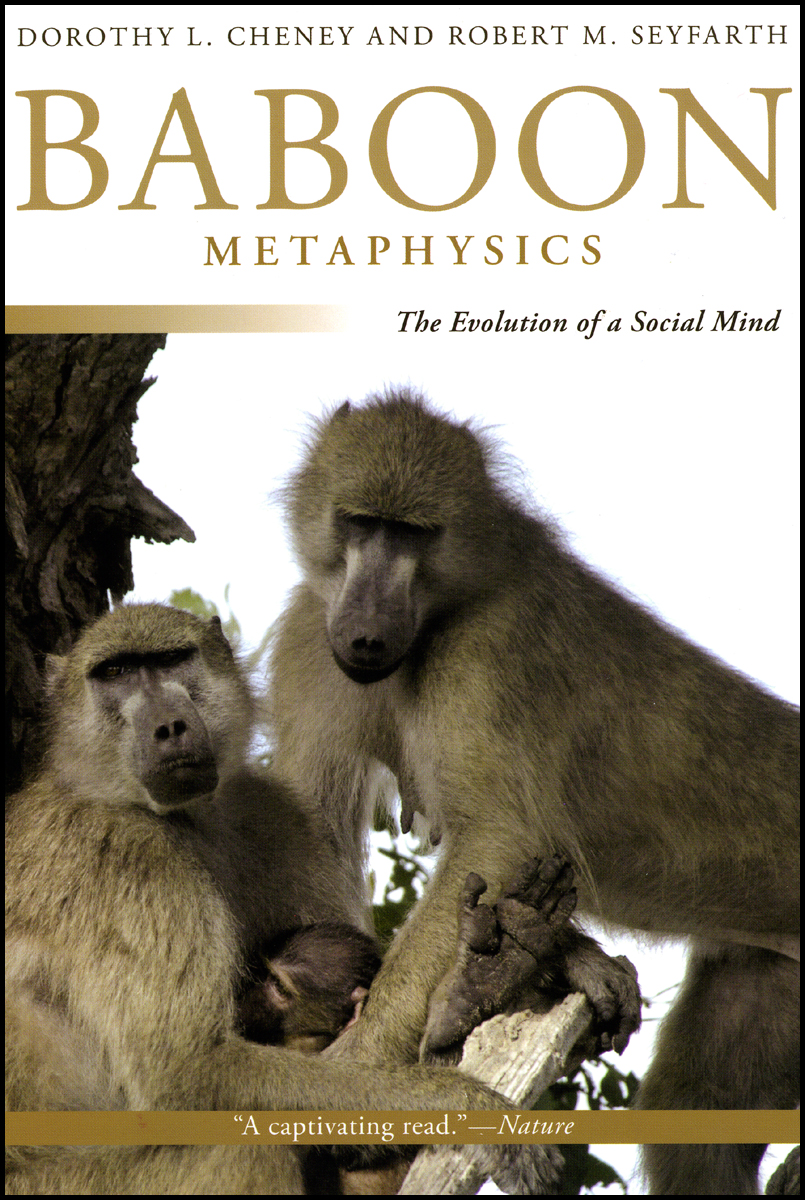Baboon Aristocrats?

The lead article in the “Science Times” section of today’s New York Times focuses on Dorothy L. Cheney and Robert Seyfarth’s new book Baboon Metaphysics: The Evolution of a Social Mind. The article features a photo gallery of the Moremi Game Reserve in Botswana’s Okavango Delta where Cheney and Seyfarth have been making some extraordinary observations of baboons in their social world, and offers some fascinating insights into their research. Reporter Nicholas Wade notes that Cheney and Seyfarth have gone a step beyond the many studies that have sought to simply parse our primate ancestor’s social organization, and instead approach their subjects with the goal of fully understanding the cognitive mechanisms that underlie their social behaviors—in the hopes of gaining a better understanding of our own. Wade writes:
Reading a baboon’s mind affords an excellent grasp of the dynamics of baboon society. But more than that, it bears on the evolution of the human mind and the nature of human existence. As Darwin jotted down in a notebook of 1838, “He who understands baboon would do more towards metaphysics than Locke.”
Dr. Cheney and Dr. Seyfarth have summed up their new cycle of research in a book titled, after Darwin’s comment, Baboon Metaphysics. Their conclusion, based on many painstaking experiments, is that baboons’ minds are specialized for social interaction, for understanding the structure of their complex society and for navigating their way within it.
“Monkey society is governed by the same two general rules that governed the behavior of women in so many 19th-century novels,” Dr. Cheney and Dr. Seyfarth write. “Stay loyal to your relatives (though perhaps at a distance, if they are an impediment), but also try to ingratiate yourself with the members of high-ranking families.…”
Baboon society revolves around mother-daughter lines of descent. Eight or nine matrilines are in a troop, each with a rank order. This hierarchy can remain stable for generations… [because] rank among female baboons is hereditary, with a daughter assuming her mother’s rank.
News of that fact gave great satisfaction to a member of the British royal family, Princess Michael of Kent. She visited Dr. Cheney and Dr. Seyfarth in Botswana, remarking to them, they report: “I always knew that when people who aren’t like us claim that hereditary rank is not part of human nature, they must be wrong. Now you’ve given me evolutionary proof!”
Read an excerpt from the book.